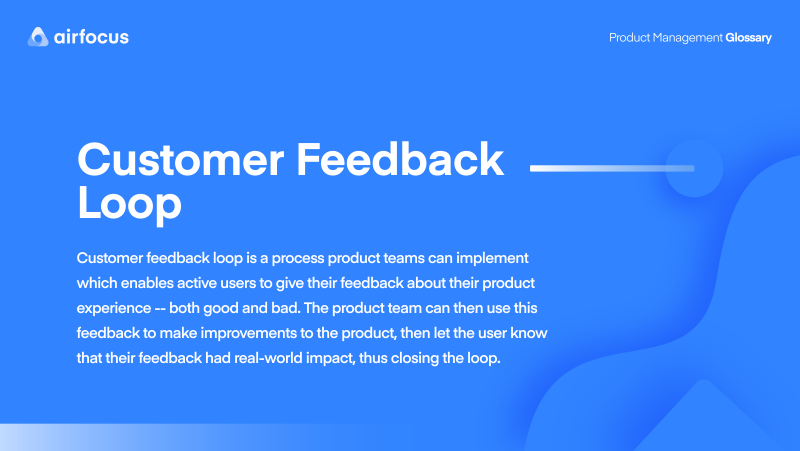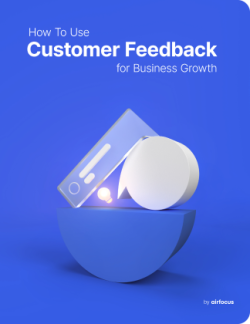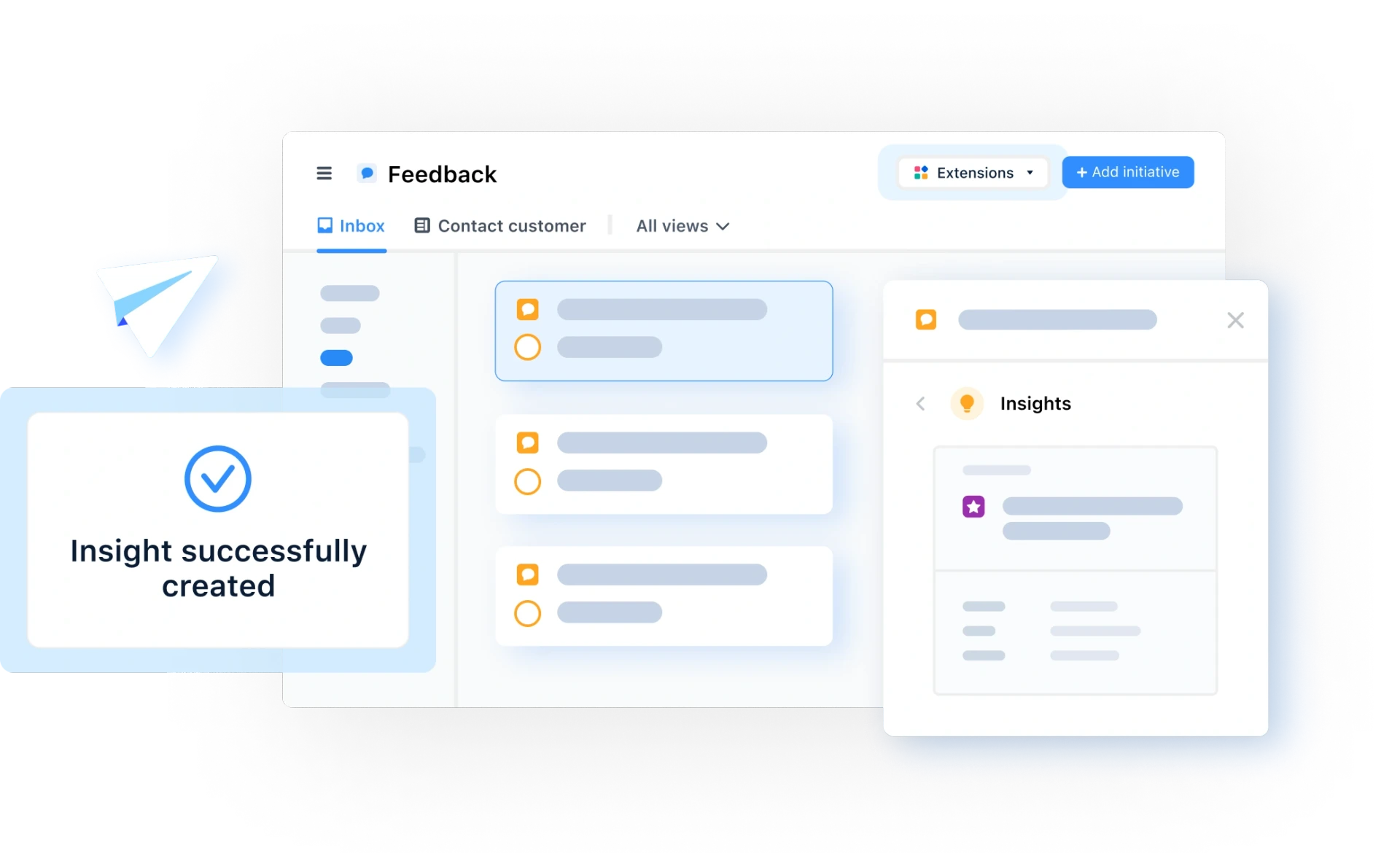Customer Feedback Loop
What is the customer feedback loop
What is the customer feedback loop?
Customer feedback loop definition -- is a process product teams can implement which enables active users to give their feedback about their product experience -- both good and bad. The product team can then use this feedback to make improvements to the product, then let the user know that their feedback had real-world impact, thus closing the loop.
Focusing too much on internal team feedback might mean product teams miss the wood for the trees. It’s here that the customer feedback loop comes in very handy.
Customer feedback loop best practices
When planning a customer feedback loop, product teams should consider best practices, which come down to three key areas:
Collecting customer feedback. Teams can collect feedback via surveys, in-app messaging, Net Promoter Score requests, email questionnaires, and more.
Analyze and act upon the feedback. Once feedback has been provided from a customer, it should be properly analyzed and documented.
Close the loop by following up with the customer. The most empowering thing about a feedback loop like this is that the customer can see their feedback shaping the product’s future.
How do you create a customer feedback loop?
Deploying a well-designed customer feedback loop can increase customer loyalty, improve the customer experience, and create a more collaborative development process.
Download Now: Get our 5-minute guide on Why Insights Are Essential and How to Source Them
Before doing anything else, the product owner or product manager should loop in all relevant department heads to the planning process. Doing so will ensure organization-wide buy-in, because there’s no guarantee all departments will agree with the strategy.
Next, you should define exactly where you’re already receiving customer feedback -- if anywhere -- and decide if it can be improved or extended.
Then, decide how you'll be collecting your customer feedback. This might include:
Customer Effort Score surveys
Net Promoter Score (NPS) surveys
In-app feedback widgets
Customer interviews
Whatever methodology you choose, ensure that the resulting feedback is collected in the same silo, so that analysis is more efficient.
As feedback starts to come in, stay agile and decide what’s working (and what isn’t). Make changes where necessary, and potentially consider incentives if you’re not receiving enough.
Of course, you might find that your feedback numbers skyrocket when customers see that feedback has a meaningful impact on the product.
Closing the customer feedback loop
The last part of deploying a customer feedback loop strategy is to close it. This means letting your customer know that you’ve heard their feedback and you’ve acted on it.
Closing the loop is all about empowering your customer, so choose the delivery method that best fits your brand. This might be a personal email from the team lead, a blog post on the website, a global social media post, or a personal social media @tag, assuming the customer consents.

General FAQ

Glossary categories
All product feedback in one place

Experience the new way of doing product management








